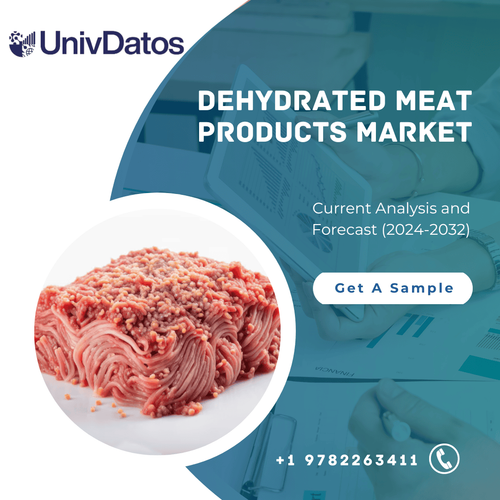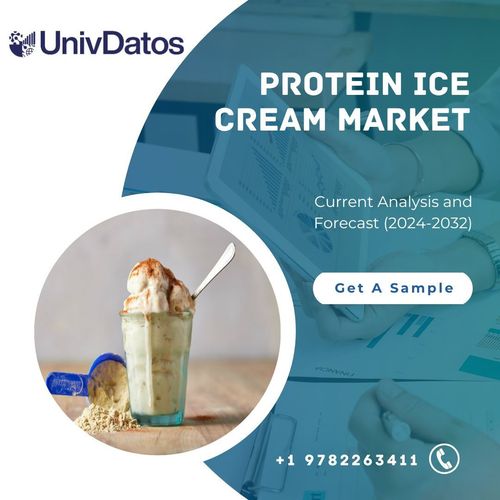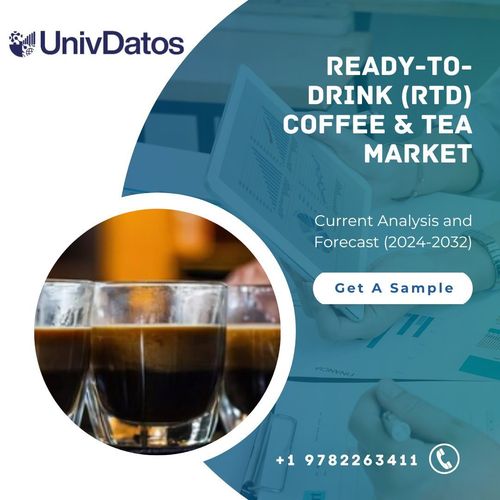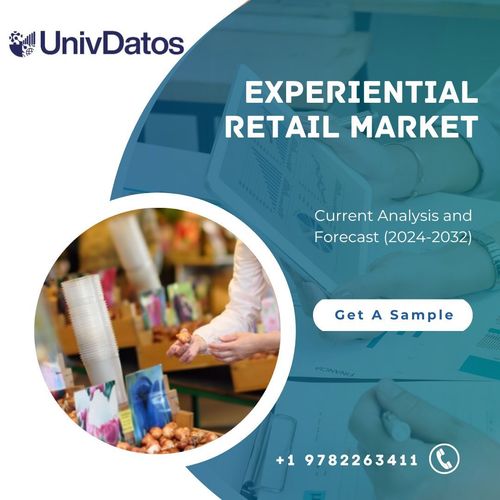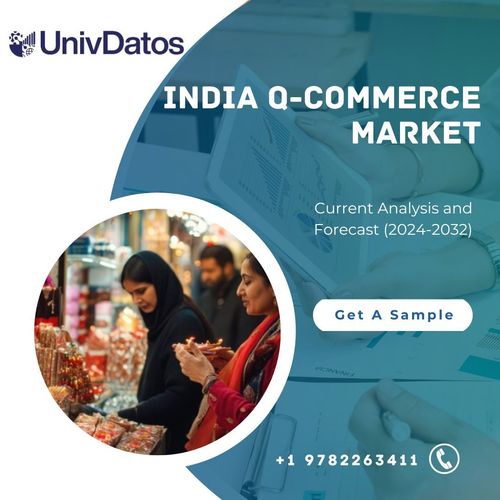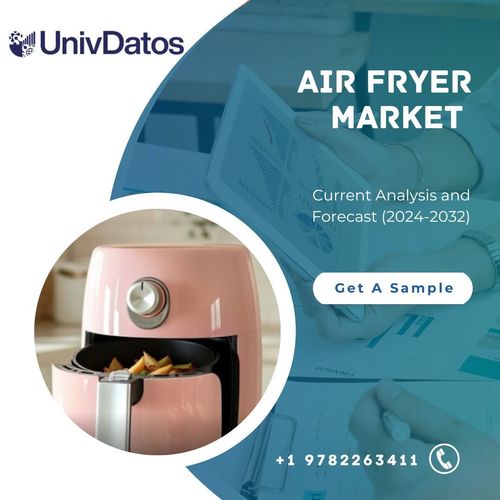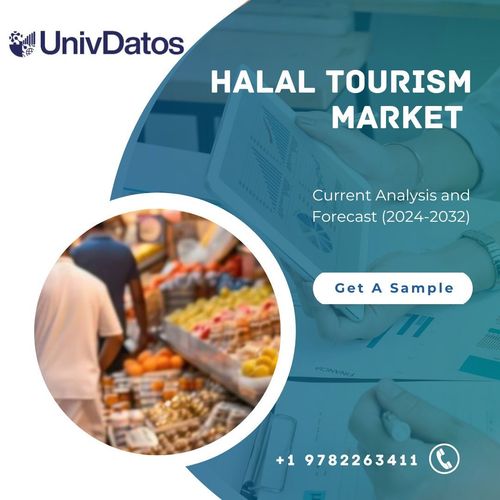India Soy Beverages Market: Current Analysis and Forecast (2024-2032)
Emphasis on Product Type (Soy Milk, Soy-Based Drinkable Yogurt and Soy Beverage Powder); Flavor (Plain Soy Beverages and Flavored Soy Beverages); Distribution Channel (Online and Offline); Region
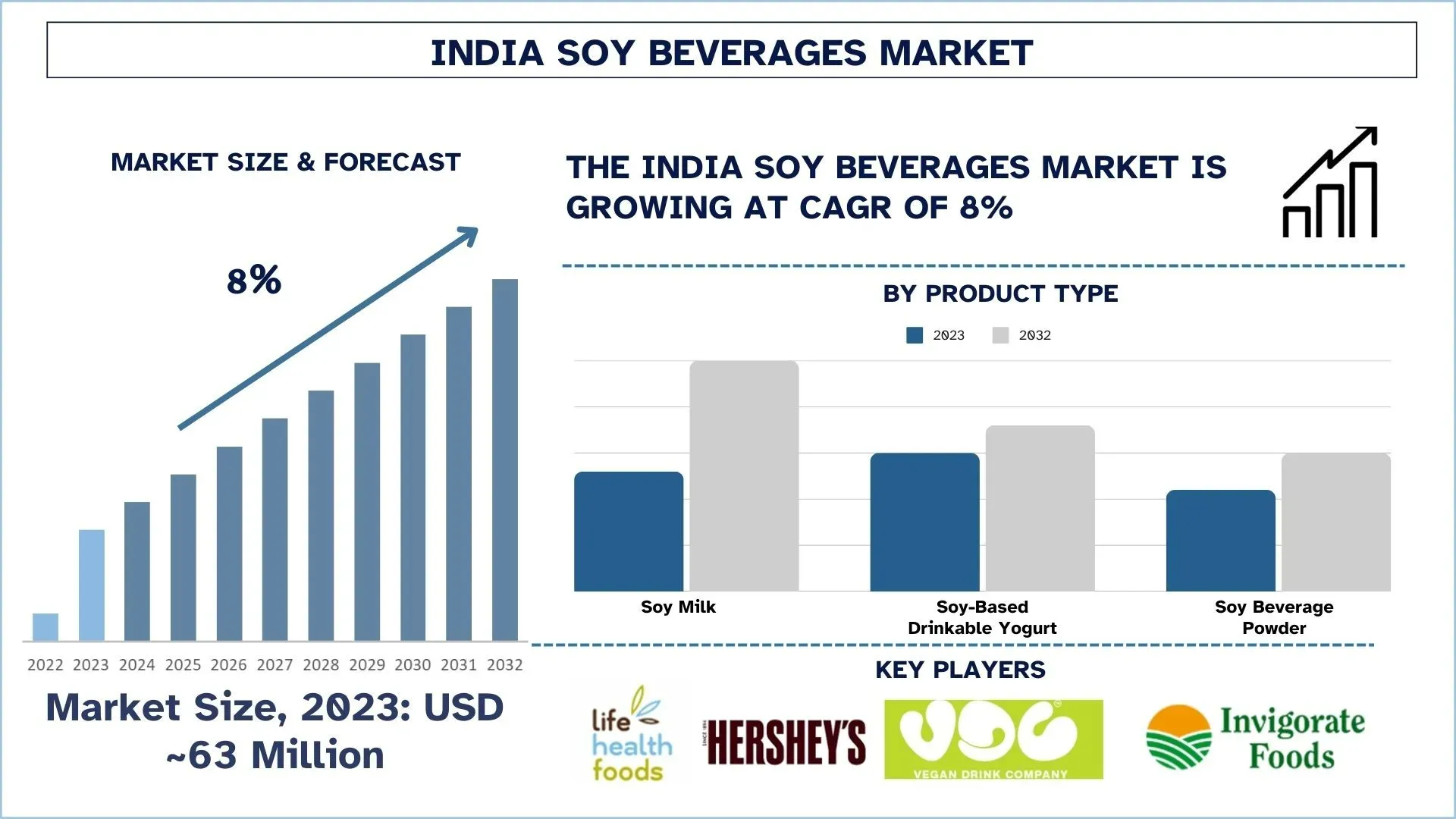
India Soy Beverages Market Size & Forecast
The India Soy Beverages Market was valued at ~USD 63 Million in 2023 and is expected to grow at a strong CAGR of around 8% during the forecast period (2024-2032) owing to the increasing number of consumers seeking non-dairy beverage alternatives.
India Soy Beverages Market Analysis
Soy beverages are derived from soybeans and thus can be referred to as vegetarian beverages or milk, which are nutritious replacements for dairy products. It is available in many variations, such as plain, flavored, and fortified products to suit the needs of health-conscious and lactose-intolerant individuals. Soy beverages are slowly tapping the market as people are shifting towards increased awareness of consuming plant-based diets.
Soy beverage manufacturers in India have become more diversified, innovating flavored, fortified, and ready-to-drink (RTD) soy beverages to attract more consumer groups. To improve the availability, they are focusing on e-commerce and modern trade, whereas to increase customers’ awareness about their products, they are targeting digital media and influence partnerships. Approximately, eco-labels and renewable packaging solutions are helpful for the enhancement of brands’ reputation and attracting consumers, who make themselves aware of the level of environmental protection. Driving the market penetration further are various tie-ups with fitness centers, cafés, and Quick Service Restaurant (QSR) outlets. Still, competitive pricing and local Indian flavors are favorable for the Indian population, which is also helping make future consumers.
For instance, in March 2023, Life Health Foods (India), a pioneer in the plant-based beverage segment, launched a new vegan drink So Good Oat Unsweetened beverage – a dairy-free, plant-based milk.
Fortified with essential vitamins, So Good Oat Unsweetened has no added sugar, zero cholesterol, and is free from preservatives. The So Good plant-based beverage range includes Almond, Cashew, Coconut, Soy and Oat – all available in both 1L and 200ml formats.
India Soy Beverages Market Trends
This section discusses the key market trends that are influencing the various segments of the India Soy Beverages market, as identified by our team of research experts.
Ready-To-Drink (RTD) Soy Beverages Transforming Industry
The consumption trend of Ready-to-Drink (RTD) soy beverages has grown in India primarily for the reason that more individuals are becoming urbanized and pressed for time. Following those trends, consumers desire more convenient, healthy, and dairy-free products to stimulate brands to launch on-the-go soy beverages in single-serve cups. Moreover, companies are coming up with new flavors, products with some enhanced vitamins and minerals, and packaging with consideration for the environment. Market access is increasing due to the growth in modern retail facilities, e-commerce, and quick-service restaurants (QSRs) in the present times. As there is an increasing concern regarding soy’s nutritional benefits in India, RTD soy beverages are now preferred by consumers. As per the ICRA Limited report, in January 2024, the aggregate revenues of the domestic quick-service restaurant (QSR) industry witnessed a healthy growth of 54% in FY2022 and 33% in FY2023, supported by strong pent-up demand post-Covid as well as wide adoption of user-friendly delivery applications and tech-enabled delivery channels. Consequently, the average daily sales (ADS) improved to ~Rs. 95,000 (USD 1088.42) in FY2023 from ~Rs. 88,000 (USD 1008.22) during FY2022.
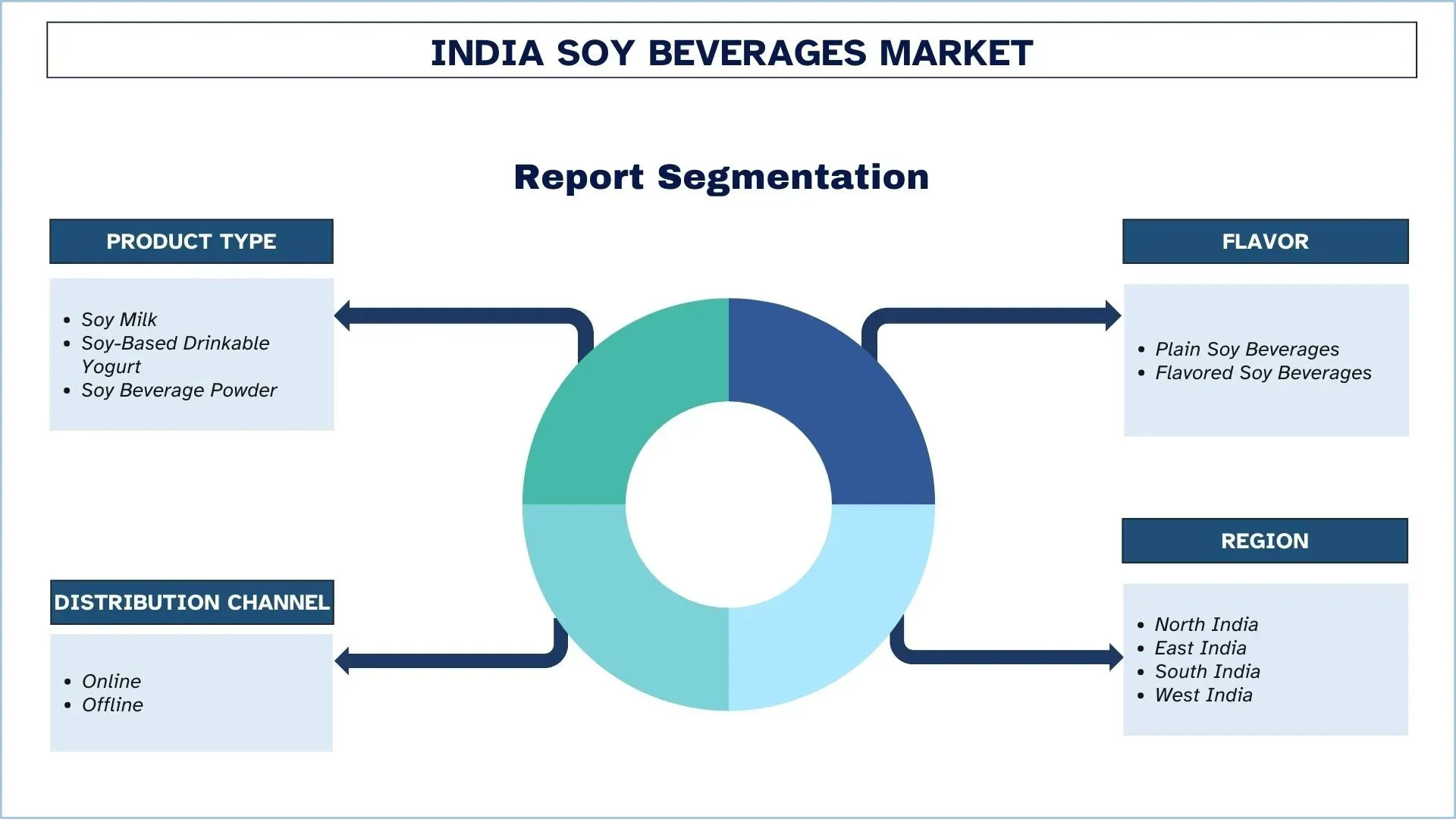
North India Leads the Market
Further, the soy beverages market in North India contributes the most to the overall growth because of changing food habits and increasing urbanization. The area has an especially high demand for dairy products and dairy product substitutes located in South Delhi, Chandigarh, and Lucknow. The companies are launching new milk and flavored soy beverages for the requirement that is associated with fitness and wellness. It also increases soy-based drinks’ accessibility through the assimilation of organized retail formats and online selling platforms. Also, there are increased marketing and awareness campaigns that are creating acceptance of consumer use in this region.
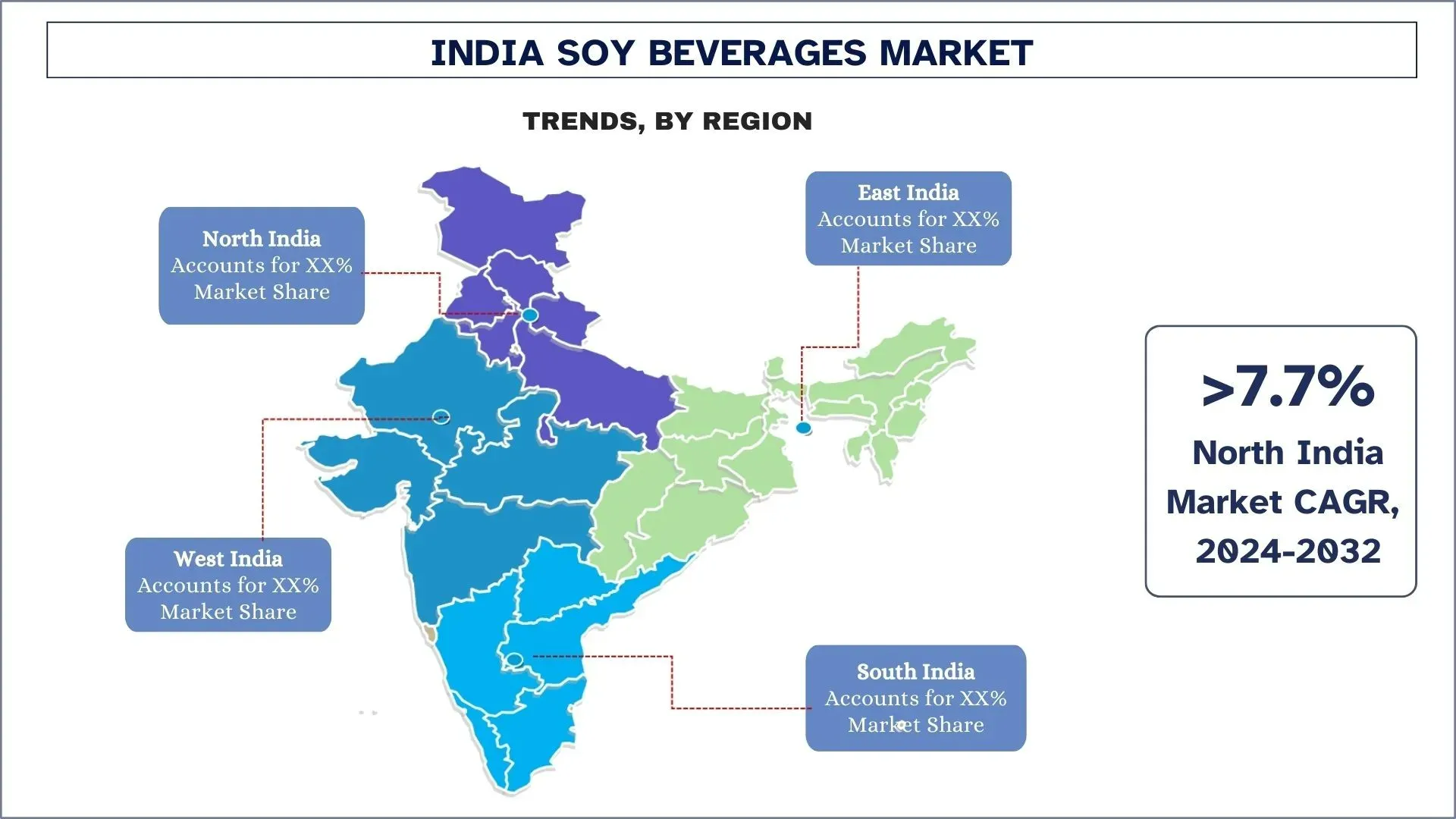
India Soy Beverages Industry Competitive Landscape
The India Soy Beverages market is competitive and fragmented, with the presence of several country market players. The key players are adopting different growth strategies to enhance their market presence, such as partnerships, agreements, collaborations, new product launches, geographical expansions, and mergers and acquisitions.
Top Soy Beverages Manufacturing Companies in India
Some of the major players operating in the market include Life Health Foods, Hershey India Private Limited, The VDC - Vegan Drink Company, Invigorate Foods, health on plants, Vinamis, Urban Platter, Bio Nutrients (India) Pvt.Ltd., Hye Foods, Nature Vit.
India Soy Beverages Market News
- On February 20th, 2024, New Delhi: The U.S. Soybean Export Council (USSEC) announced the launch of the Soy Excellence Center (SEC) in India, a pioneering initiative aimed at early-to mid-career protein professionals to support Indian food and agricultural sectors’ sustainable growth. The SEC is designed to foster education advancement for employees and employers in agribusiness, thereby elevating expertise and competencies.
- In February 2021, Mumbai-based Life Health Foods (India) Pvt. Ltd., a pioneer in the health beverage segment, launched its new brand So Good protein+, dairy-free plant-based milk. The new delicious So Good Protein+ Soy beverage delivers what the brand promises – a healthy and nutritious drink.
India Soy Beverages Market Report Coverage
Report Attribute | Details |
Base year | 2023 |
Forecast period | 2024-2032 |
Growth momentum | Accelerate at a CAGR of 8% |
Market size 2023 | USD 63 Million |
Regional analysis | North India, South India, East India, and West India |
Major contributing region | West India is expected to grow at the highest CAGR during the forecasted period. |
Companies profiled | Life Health Foods, Hershey India Private Limited, The VDC - Vegan Drink Company, Invigorate Foods, health on plants, Vinamis, Urban Platter, Bio Nutrients (India) Pvt.Ltd., Hye Foods, Nature Vit |
Report Scope | Market Trends, Drivers, and Restraints; Revenue Estimation and Forecast; Segmentation Analysis; Demand and Supply Side Analysis; Competitive Landscape; Company Profiling |
Segments Covered | By Product Type; By Flavor; By Distribution Channel; By Region |
Reasons to buy this report:
- The study includes market sizing and forecasting analysis validated by authenticated key industry experts.
- The report presents a quick review of overall industry performance at one glance.
- The report covers an in-depth analysis of prominent industry peers with a primary focus on key business financials, product portfolios, expansion strategies, and recent developments.
- Detailed examination of drivers, restraints, key trends, and opportunities prevailing in the industry.
- The study comprehensively covers the market across different segments.
- Deep dive regional level analysis of the industry.
Customization Options:
The India Soy Beverages market can further be customized as per the requirement or any other market segment. Besides this, UMI understands that you may have your own business needs, hence feel free to connect with us to get a report that completely suits your requirements.
Table of Contents
Research Methodology for the India Soy Beverages Market Current Analysis and Forecast (2024-2032)
Analyzing the historical market, estimating the current market, and forecasting the future market of the India Soy Beverages market were the three major steps undertaken to create and analyze the adoption of India Soy Beverages in major states. Exhaustive secondary research was conducted to collect the historical market numbers and estimate the current market size. Secondly, to validate these insights, numerous findings and assumptions were taken into consideration. Moreover, exhaustive primary interviews were also conducted, with industry experts across the value chain of the India Soy Beverages market. Post assumption and validation of market numbers through primary interviews, we employed a top-down/bottom-up approach to forecasting the complete market size. Thereafter, market breakdown and data triangulation methods were adopted to estimate and analyze the market size of segments and sub-segments of the industry, about detailed methodology is explained below:
Analysis of Historical Market Size
Step 1: In-Depth Study of Secondary Sources:
A detailed secondary study was conducted to obtain the historical market size of the India Soy Beverages market through company internal sources such as annual reports & financial statements, performance presentations, press releases, etc., and external sources including journals, news & articles, government publications, competitor publications, sector reports, third-party database, and other credible publications.
Step 2: Market Segmentation:
After obtaining the historical market size of the India Soy Beverages market, we conducted a detailed secondary analysis to gather historical market insights and share for different segments & sub-segments for major regions. Major segments are included in the report as product type, flavor, distribution channel, and regions. Further country-level analyses were conducted to evaluate the overall adoption of testing models in that region.
Step 3: Factor Analysis:
After acquiring the historical market size of different segments and sub-segments, we conducted a detailed factor analysis to estimate the current market size of the India Soy Beverages market. Further, we conducted factor analysis using dependent and independent variables such as the product type, flavor, distribution channel, and regions of the India Soy Beverages market. A thorough analysis was conducted of demand and supply-side scenarios considering top partnerships, mergers and acquisitions, business expansion, and product launches in the India Soy Beverages market sector across the country.
Current Market Size Estimate & Forecast
Current Market Sizing: Based on actionable insights from the above 3 steps, we arrived at the current market size, key players in the India Soy Beverages market, and market shares of the segments. All the required percentage shares split and market breakdowns were determined using the above-mentioned secondary approach and were verified through primary interviews.
Estimation & Forecasting: For market estimation and forecast, weights were assigned to varied factors including drivers & trends, restraints, and opportunities available for the stakeholders. After analyzing these factors, relevant forecasting techniques, i.e., the top-down/bottom-up approach, were applied to arrive at the market forecast 2032 for different segments and sub-segments across the major markets in India. The research methodology adopted to estimate the market size encompasses:
The industry’s market size, in terms of revenue (USD) and the adoption rate of the India Soy Beverages market across the major markets domestically
All percentage shares, splits, and breakdowns of market segments and sub-segments
Key players in the India Soy Beverages market regarding products offered. Also, the growth strategies adopted by these players to compete in the fast-growing market.
Market Size and Share Validation
Primary Research: In-depth interviews were conducted with the Key Opinion Leaders (KOLs) including Top Level Executives (CXO/VPs, Sales Head, Marketing Head, Operational Head, Regional Head, Country Head, etc.) across major regions. Primary research findings were then summarized, and statistical analysis was performed to prove the stated hypothesis. Inputs from primary research were consolidated with secondary findings, hence turning information into actionable insights.
Split of Primary Participants in Different Regions
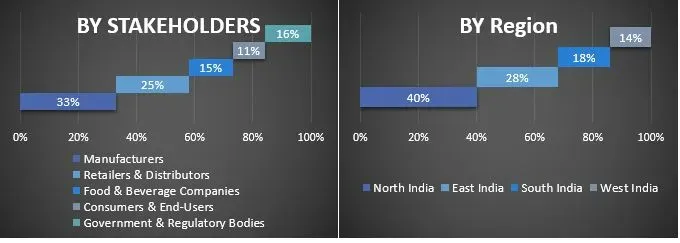
Market Engineering
The data triangulation technique was employed to complete the overall market estimation and to arrive at precise statistical numbers for each segment and sub-segment of the India Soy Beverages market. Data was split into several segments & sub-segments post studying various parameters and trends in the areas of the product type, flavor, and distribution channel, and regions in the India Soy Beverages market.
The main objective of the India Soy Beverages Market Study
The current & future market trends of the India Soy Beverages market were pinpointed in the study. Investors can gain strategic insights to base their discretion for investments on the qualitative and quantitative analysis performed in the study. Current and future market trends determined the overall attractiveness of the market at a state level, providing a platform for the industrial participant to exploit the untapped market to benefit from a first-mover advantage. Other quantitative goals of the studies include:
Analyze the current and forecast market size of the India Soy Beverages market in terms of value (USD). Also, analyze the current and forecast market size of different segments and sub-segments.
Segments in the study include areas of product type, flavor, distribution channel, and regions.
Define and analyze the regulatory framework for the India Soy Beverages
Analyze the value chain involved with the presence of various intermediaries, along with analyzing customer and competitor behaviors of the industry.
Analyze the current and forecast market size of the India Soy Beverages market for the major region.
Major Regions in India studied in the report include North India, South India, East India, and West India.
Company profile of the India Soy Beverages market and the growth strategies adopted by the market players to sustain in the fast-growing market.
Deep dive state-level analysis of the industry.
Frequently Asked Questions FAQs
Q1: What is the current market size and growth potential of the Indian Soy Beverages market?
The India Soy Beverages market was valued at USD 63 Million in 2023 and is expected to grow at a CAGR of ~8% during the forecast period (2024-2032).
Q2: What are the driving factors for the growth of the India Soy Beverages market?
The growing lactose intolerance, rising health consciousness, increasing disposable income and Western dietary influences, expansion of organized retail and e-commerce, and increasing demand for functional beverages are driving the India Soy Beverages market.
Q3: Which segment has the largest share of the India Soy Beverages market by product type?
The soy milk segment has the largest share of the India Soy Beverages market by product type.
Q4: What are the trends in the India Soy Beverages market?
The growth of ready-to-drink (RTD) soy beverages and fusion with other plant-based ingredients are a major trend in the market.
Q5: Which region will dominate the India Soy Beverages market?
North India is expected to dominate the market.
Related Reports
Customers who bought this item also bought

